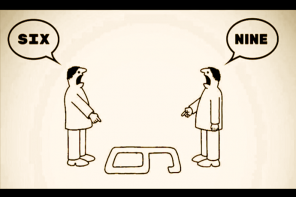WASHINGTON — A public park in Utah that includes a monument to the Ten Commandments need not make room for a similar monument reflecting the beliefs of an unusual religion called Summum, the Supreme Court ruled on Wednesday. — Feb. 27, 2009, New York Times
The decision in Summum was clearly right—the Ten Commandments monument is government speech, and therefore the government need not open up its park to any private speaker, like the Summum, who wants access—but it shows why the Court’s earlier decision in Van Orden (upholding the Ten Commandments display on the Texas Capitol grounds) was wrong.
In that case, which I discuss in my forthcoming book Holy Hullabaloos: A Road Trip to the Battlegrounds of the Church/State Wars (complete with a trip to Austin and my conversation with Thomas Van Orden, the plaintiff in the case—RD10Q with Wexler coming soon…), Justice Breyer’s controlling concurring opinion, which was about as clear as a bowl of oatmeal, upheld the Ten Commandments monument (roughly) because it had been around for a long time and hadn’t caused any divisiveness and therefore did not promote or endorse religion. Nobody seemed to care about the monument for the forty years it had been up, Breyer reasoned, so why should we be worried about it?
This case shows that putting up Ten Commandments monuments can indeed be very divisive. Just ask the Summum. One of the bizarre results of the decision is that, were the park (or a similarly situated park somewhere else) to now accept the Summum monument and put it up near the Ten Commandments monument, and someone were to challenge both monuments as violating the Establishment Clause of the First Amendment, the case against the Summum monument would be stronger than the case against the Ten Commandments monument. That just seems really strange to me.




